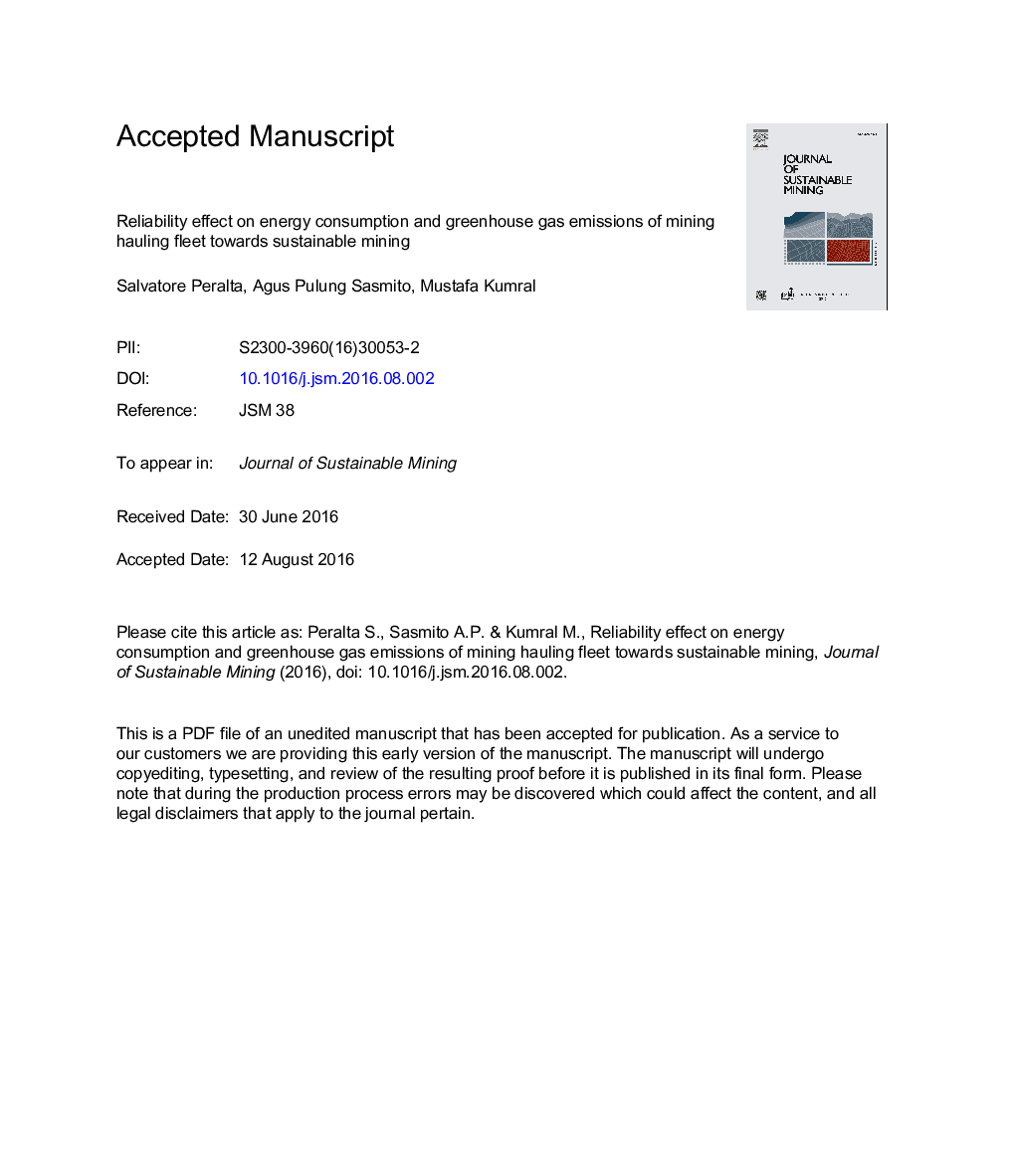| Article ID | Journal | Published Year | Pages | File Type |
|---|---|---|---|---|
| 8129736 | Journal of Sustainable Mining | 2016 | 34 Pages |
Abstract
Mineral commodity prices have decreased swiftly since 2012. For example, gold price, which was above $1800 per ounce, is currently about $1250 per ounce. Price slumps were even more severe in the base metals. Furthermore, the resource degradation and complex geologic conditions give rise to operation costs. As a result, many mining operations and development projects were eventually suspended, cancelled or ceased. Environmental compliance is also another challenge to the mining industry. The fuel consumed by diesel trucks emits greenhouse gases, which are one of contributors to the global warming. In Canada, the provinces of Quebec, British Columbia and Alberta introduced carbon taxes with the objective of reducing gas emissions in attempt to mitigate climate change. In this scope, only way to stay in business for a mining company is to invest more efficient and environmental friendly production practices such that operation costs are reduced. Given that maintenance costs and energy consumption are the largest contributors to operation costs, the minimization of carbon emissions and the maximization of equipment availability would be beneficial. This paper addresses to quantify the relationship between equipment reliability and energy consumption through a case study. It shows that a maintenance policy based on equipment reliability can significantly reduce energy consumption and its associated gas emissions.
Related Topics
Physical Sciences and Engineering
Energy
Energy (General)
Authors
Salvatore Peralta, Agus Pulung Sasmito, Mustafa Kumral,
